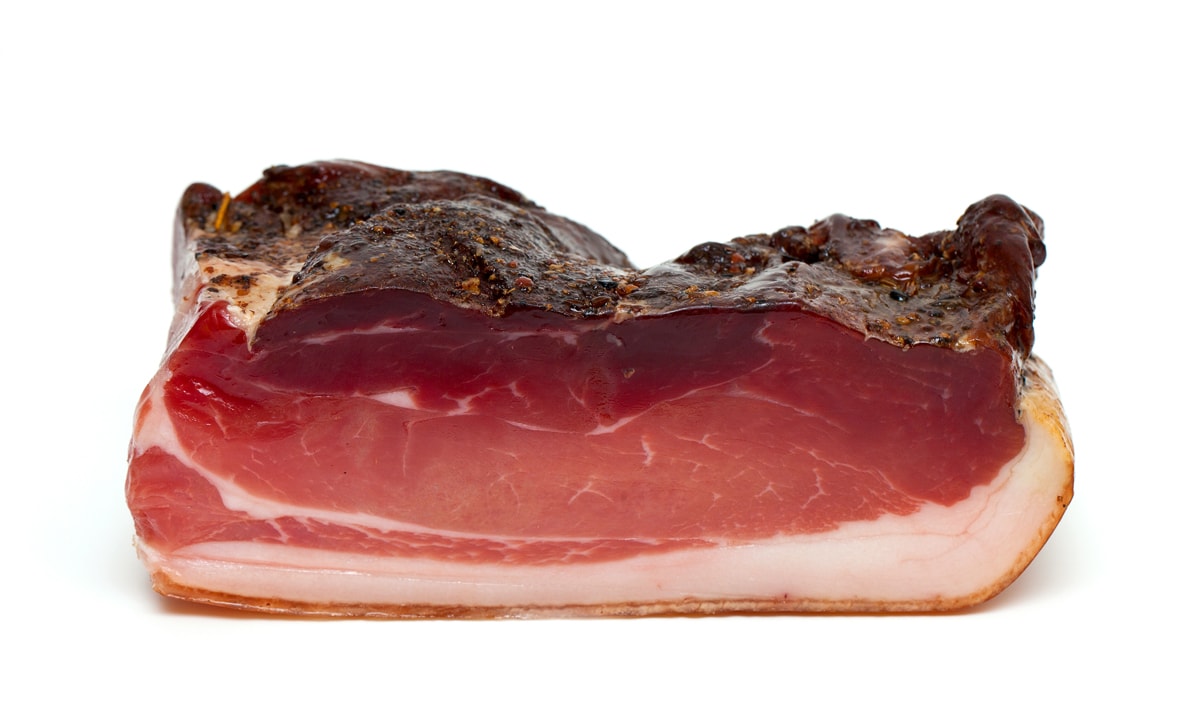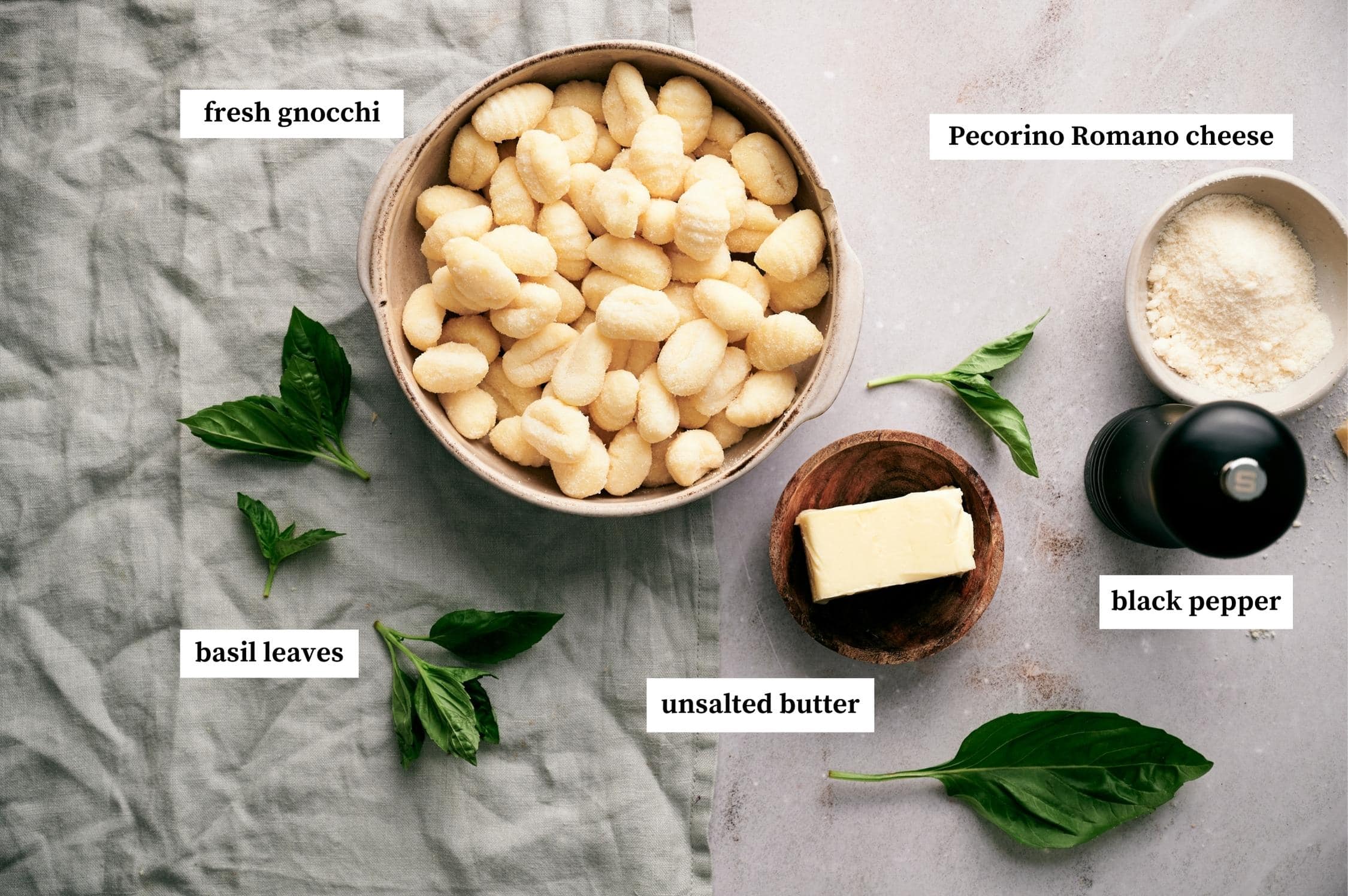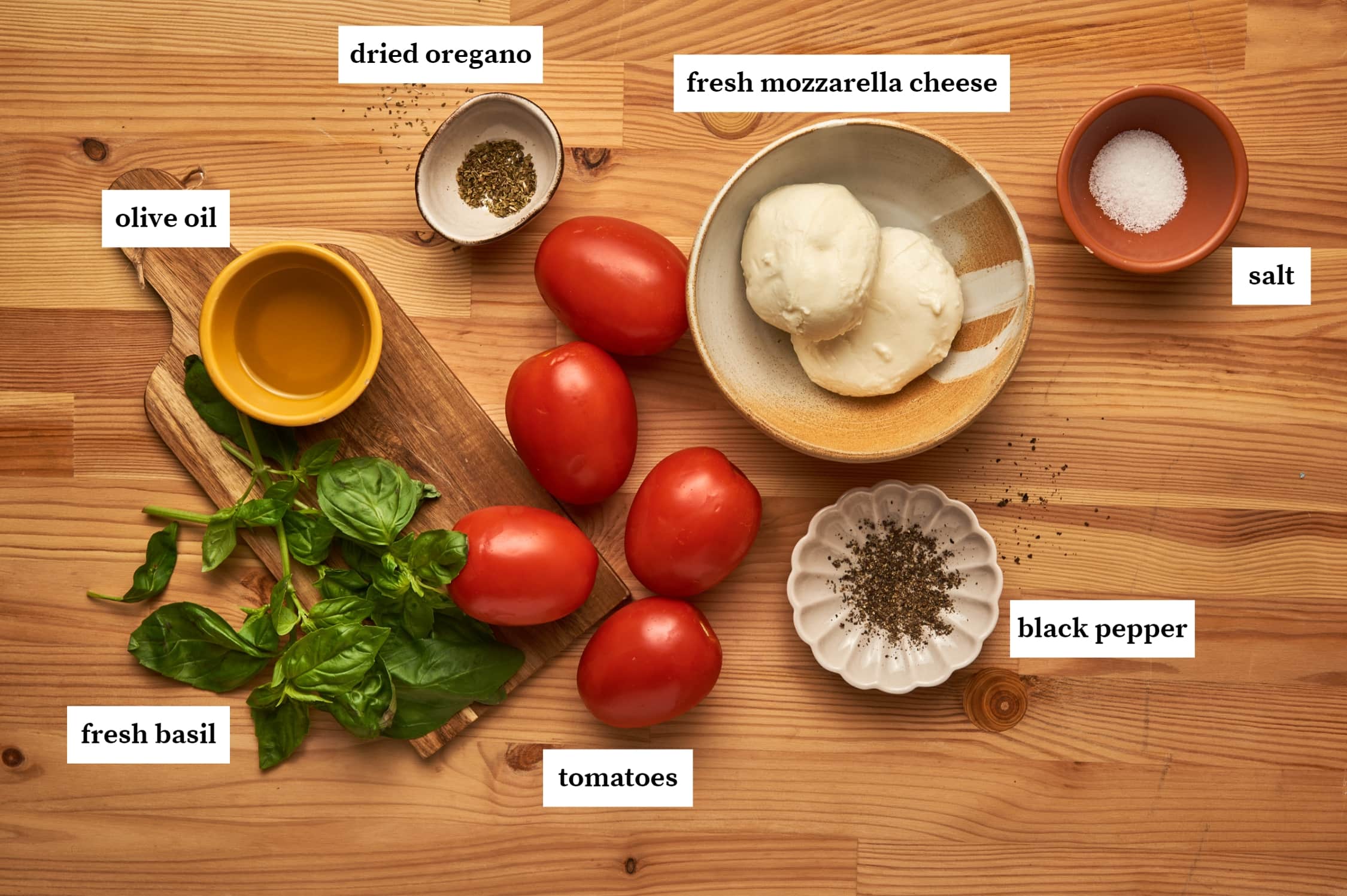Speck is a delicious smoky salt-cured pork meat that is said to be “a little salt, a little smoke and a lot of fresh air.” It has a long history, dating back hundreds of years and is made in the beautiful mountains of Northern Italy.
What is speck?
Speck is a type of charcuterie from Alto Adige made from pork leg that is similar to prosciutto crudo in terms of taste, but with the addition of a smoky flavor. Unlike prosciutto, the bone is removed from the meat before the piece is salted, smoked “cold” in special rooms at a maximum temperature of 20°C (68°F) and cured by following the local traditional curing methods.
History and origin of speck
The first records of a speck-like meat being made in the region of South Tyrol date back to the 1200s, but the use of the name speck began in the 1700s. The word speck comes from the German word spek, which means “thick” or “fat.” Speck has been made in this area ever since and has gained worldwide popularity for its versatility and unique flavor profile..
The Speck Alto Adige Consortium was founded in 1992 and speck was awarded the IGP (Indicazione Geografica Protetta or Protected Geographical Indication in English) designation in 1996, meaning it is a protected product from a specific area and with a specific “recipe” that must be followed when making it.
In South Tyrol, the preparation of speck, which is called prosciutto in other parts of Italy, is a combination of two different production methods. The first method is the one used to make prosciutto in countries near the Mediterranean Sea, by drying the pork legs with air and salt. The second method is the one for making salt-cured ham from Northern and Central European countries where the preparation includes salt, spices and smoke.
Characteristics of speck
Speck has an outer rind that is a characteristic brown color. It is very important that the speck you buy doesn’t have any mold or strange folds or deformations.
When you slice into speck the internal appearance is a deep red color with some marbling that goes from the top and extends downwards, and then there is a much smaller,pinkish-white layer at the bottom. The texture of the internal meat should be elastic, firm and oily, and never greasy or soft to the touch.
The fragrance of fresh cut speck is light and smoky while the flavor, on the other hand, is mild with subtle nutty and peppery notes. Speck is never overly salty because of its low salt content compared to other salt-cured meats.
Different ways to cut speck
There are several ways you can cut speck depending on how you are planning to use it. If you are using it like lunch meat to put on bread, then you will most likely want to cut it very thin using a slicing machine like they use at a deli counter. The thinner the slice, the more delicate the flavor will be. If you like a more intense flavor and texture, you can cut thicker slices by hand with a very sharp butcher knife.
If you will be using the speck cubed or in strips to put in a pasta sauce, then you can simply cut with a very sharp knife, making sure to remove the top rind layer before cutting vertically. Remember, each strip of speck should have both the dark red and pink/white stripes present. These thicker cubes or strips will have a more intense flavor.
How and where is speck made?
Speck that has the IGP label can only be made in a specific geographical region in Sudtirol, and very strict guidelines must be followed during production. Here are the steps required:
The raw material is selected, consisting of lean, firm pork legs from approved farms. Frozen meat and imported meat is not allowed. The meat is branded so that the product can be traced back to its origin.The cuts are covered with salt, pepper and other spices such as bay leaves, juniper and rosemary. Other approved spices are garlic, cumin and coriander, and producers have some flexibility in their “recipe” so they can personalize their production.The cuts are “dry cured” for about three weeks, turning several times to allow for even brine (salt) absorption. There is a limit to the amount of salt the final product can have, so it is controlled during this phase.After brining, the speck is smoked at a maximum of 20°C with beech wood to add a light, smoky flavor.The cuts are then placed in cool, well-ventilated rooms for about two weeks to air dry further. The speck loses about a third of its initial weight and acquires the typical texture and flavor by the end of this process.
How is Speck consumed?
When sliced thin, speck is great as a snack or lunch meat alongside bread. It is often used cubed or in strips in pasta sauces, like in the recipe for spaetzle pasta with cream and speck sauce.
Do I need a slicing machine or meat slicer to cut speck?
If you love to cut your own speck or prosciutto, you might want to invest in a quality slicing machine aka meat slicer. With this speciality tool you will be able to purchase a cut of speck and keep it in the fridge for quite some time, cutting off thin, papery slices for sandwiches whenever you want.
If you prefer, you can also request sliced speck at your local deli counter and they can cut the slices for you. Be aware that once cut, the speck slices should be consumed in 3-4 days to ensure freshness.




